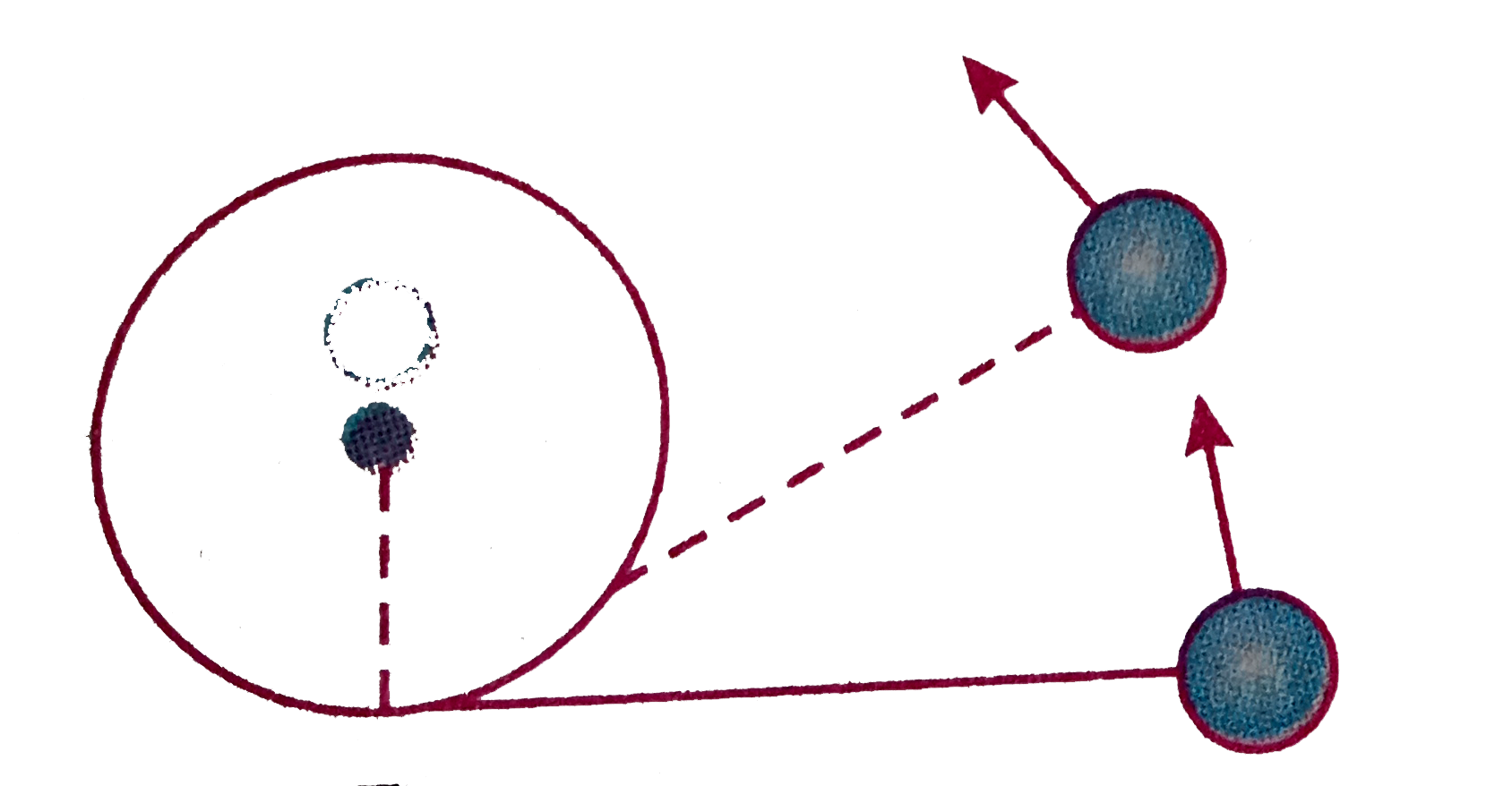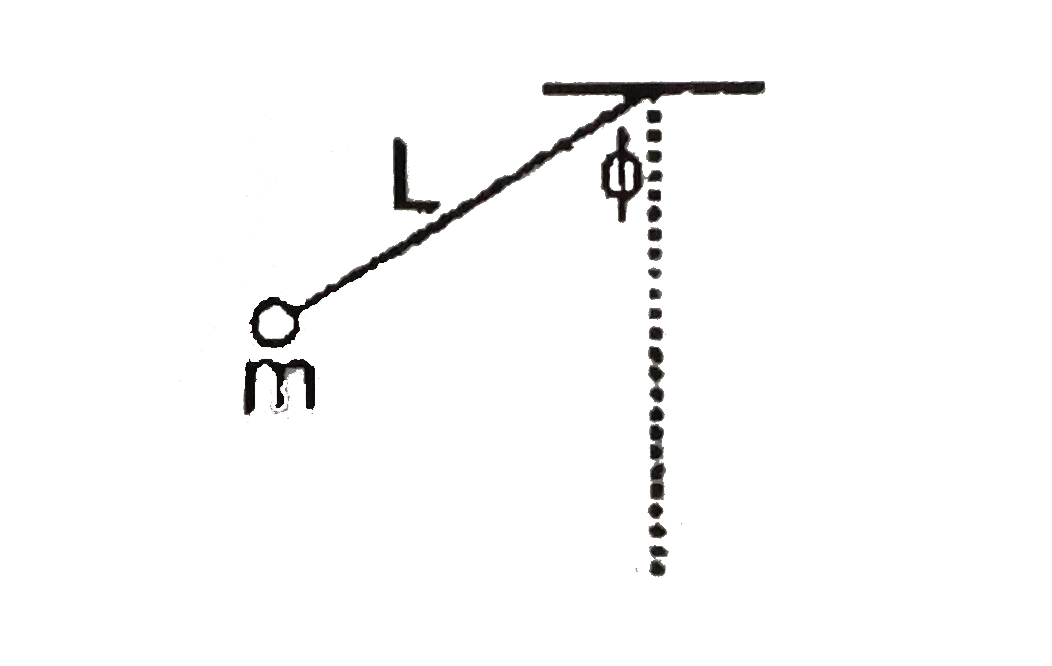A boy is swinging a ball attached to a string in a horizontal circle.If the string snaps
1 the ball will travel towards the center of the c
2 it will continue to travel along a tangent to th
3 it will fall down at the same place where the st
4 none of these
Answer : 2. "it will continue to travel along a tangent to the circle at the point the ball was at
Related Solutions
A ball is attached to a string that is attached to a pole. When the ball is hit, the string wraps around the pole and the ball spirals inwards sliding on the frictionless surface. Neglecting air resistance, what happends as the ball swings around the pole?
View SolutionA ball is attached to a string that is attached to a pole. When the ball is hit, the string wraps around the pole and the ball spirals inwards sliding on the frictionless surface. Neglecting air resistance, what happends as the ball swings around the pole?

View SolutionA pendulum is made by attaching a ball at the end of a string (the other end of the string is attached to the ceiling). The ball is released from rest at the position shown at some angle . Which of the following vectors may represent the impulse delivered by the string to the ball from the time it is released unitl the ball is at the bottom of the swing when string becomes vertical

View SolutionA ball is held at rest in position A by two light strings. The horizontal string is now cut and the ball swings to the position B as shown in figure. If 5kg is the mass of the ball and g is the acceleration due to gravity, then tension in the string attached to the bob in position A is The value of 'x' is

View SolutionA ball of mass m is attached to a string whose other end is fixed. The system is free to rotate in vertical plane. When the ball swings, no work is done on the ball by the tension in the string. Which of the following statement is the correct explanation?
View SolutionA ball of mass m is attached to a string whose other end is fixed. The system is free to rotate in vertical plane. When the ball swings, no work is done on the ball by the tension in the string. Which of the following statement is the correct explanation?
View SolutionA ball of mass m is attached to a string whose other end is fixed. The system is free to rotate in vertical plane. When the ball swings, no work is done on the ball by the tension in the string. Which of the following statement is the correct explanation?
View SolutionWhen a body is hung from a string. It does not snap. But when the same mass is set into rotation along a horizontal path at high speed holding the other end of the string. The string snaps. What is the reason?
View SolutionA ball of mass 1kg is attached to an inextensible string. The ball is released from the position shown in figure. Find the impulse imparted by the string to the ball immediately after the string becomes taut. (Take g=10m//s^2 )
View SolutionA ball of mass 1kg is attached to an inextensible string. The ball is released from the position shown in figure. Find the impulse imparted by the string to the ball immediately after the string becomes taut. (Take g=10m//s^2 )
View SolutionA ball of mass 1 kg is attached to an inextensible string. The ball is released from the position shown in figure. Find the impulse imparted by the string to the ball immediately after the string becomes taut.
View SolutionA ball of mass 0.25 kg attached to the end of a string of length 1.96 m is moving in a horizontal circle. The string will break if the tension is more than 25 N . What is the maximum speed with which the ball can be moved
View SolutionA ball of mass 0.25 kg attached to the end of a string of length 1.96 m is moving in a horizontal circle. The string will break if the tension is more than 25 N . What is the maximum speed with which the ball can be moved
View SolutionA ball of mass 0.25kg attached to the end of a string of length 1.96m moving in a horizontal circle. The string will break if the tension is more than 25N . What is the maximum speed with which the ball can be moved.
View SolutionA ball of mass 0.25 kg attached to the end of a string 1.96 m long is moving in a horizontal circle. The string breaks if tension is more than 25 N, what is the maximum speed with which the ball is moving ?
View SolutionA ball of mass 0.25 kg attached to the ends of a string of length 1.96 m is rotating in a horizontal circle . The string will break ,l if tension is more than 25 N . What is the maximum velocity with which the ball can be rotated ?
View SolutionA particle of mass 21 g attached to a string of 70cm length Keeping the string always taut the ball describes a horizontal circle of radius 15cm Calculate the angular speed of the ball .
View SolutionA ball of mass 0.25 kg attached to the end of a string of length 1.96 m is moving on a horizontal circle. The string breaks under a tension of 25 N. What is the maximum speed with which the ball can be moved ?
View SolutionA ball of mass 0.25 kg attached to the end of a string of length 1.96 m is moving in a horizontal circle. The string will break if the tension is more than 25 N . What is the maximum speed with which the ball can be moved
View SolutionA ball of mass 0.25 kg attached to the end of a string of length 1.96 m is moving in a horizontal circle. The string will break, if the tension is more than 25 N. What is the maximum speed with which the ball can be moved ?
View Solution